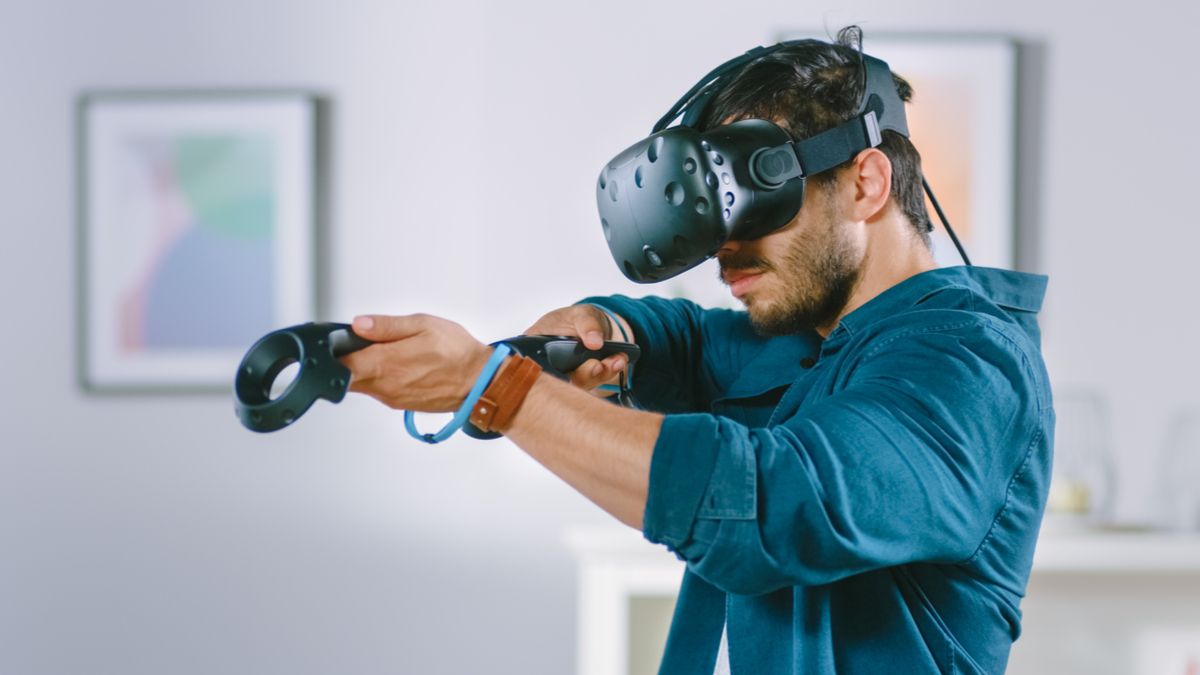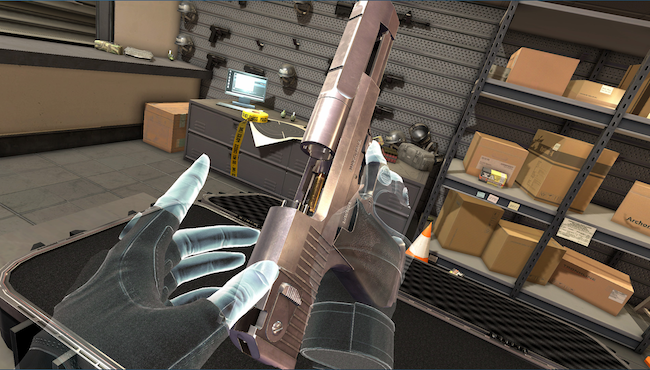Quick Links
The PlayStation 5 and Xbox Series X represent the next generation (well, the current generation if we're being pedantic), but first-person shooters offer pretty much the same experience as they always have. In VR, things couldn't be more different.
Flatscreen Shooting Isn't Really Shooting
When you play an FPS on a console or PC, there's a disconnect between your in-game character and you. Your role is essential to point the reticule at a target and tell your character when to fire. From that point on your character generally makes sure your rounds land on target. Other aspects of handling your firearm, such as reloading or holstering are all automated in the world of flat screen shooters. There's nothing about shooting in an FPS that's anything like actually shooting. It's essentially a skin for a very different activity.
That's not to say some developers haven't tried. Realistic simulation titles such as the ARMA series try to do the best they can with a flat-screen, a mouse, and a keyboard. Still, it doesn't quite hold together as an experience.
Flat-screen shooters all involve lining up pixels on a 2D plane, whereas shooting is something that happens in 3D space. No matter how powerful your GPU or sophisticated your CPU simulation, there's a hard limit to how shooting can be represented on a flat monitor or TV.
The Satisfaction of VR Firearms
Shooting in VR games, whether it's towards the simulator or arcade end of the spectrum, feels like an entirely different type of game than traditional shooters on a console or PC. The weapon is now a 3D object, rather than what's essentially a picture overlaid in your viewport. It requires something much closer to actual marksmanship to aim at a target and actually hit it.
Aiming down your sights and hitting your target feels far more rewarding in VR than in traditional games. Every round feels like a small individual victory.
Holstering, reloading, modifying, and operating VR firearms is an engaging activity all by itself, even before we get to other game elements.
The Best VR Shooters
There are plenty of VR shooters out there, but a few are worth highlighting for their enjoyable gunplay.
Gun Club VR (for the Oculus Quest and Steam) looks and feels a little like a cheap mobile game at first, but it's actually a title with way more depth than you'd expect. Buying and modifying guns to your style and playing skills-based activities such as marksman challenges fully engage you in the act.
Resident Evil 4 VR (Quest 2) is a perfect example of how transformative VR can be for shooters. It takes the classic over-the-shoulder shooter Resident Evil 4 and transforms it into an embodied first-person VR shooter. Desperately fighting off the advancing hordes with your pistol or shotgun puts more excitement into five minutes of gameplay than some flat-screen shooters manage across their entire run.
Half-Life Alyx (PC SteamVR) isn't just a showcase for what VR games can and should be, it has absolutely stupendous gunplay. Standing in a cold, concrete, dimly-lit basement and fumbling to reload a pistol while a headcrab zombie shuffles towards you is something that never gets old.
There are many honorable mentions as well, including off-beat gun-based VR games such as BONEWORKS, Pistol Whip, or Superhot VR. Onward in particular is a pioneering mil-sim (military simulation) multiplayer shooter that offers a leap over eSports fodder such as Counterstrike.
VR Shooting Has Room for Improvement
While we think that VR shooters offer the most substantial change to how it feels to shoot in a video game, the experience has a few rough spots. The biggest constraint is movement. In flat screen shooters, you can speed around a level by simply pushing your sticks in the right direction, but in VR you can't physically run around unless you enjoy colliding with things.
Some games, like Half-Life Alyx, are designed with encounters that don't require fast movement. Rather it relies on slow-paced teleportation. Other games, like Resident Evil 4 VR, let you run around using the right stick on the Touch controller. This type of fast movement can lead to a queasy feeling if you aren't used to it, so it's not the most comfortable solution.
High-end VR systems like the Omni One make use of omnidirectional treadmills to let players move around as much as they'd like, but these are likely too expensive and impractical in their current form.
Haptics could also be made stronger, to introduce a greater sense of recoil. There's always the option to have shooter peripherals as well, helping complete the experience. If you enjoy shooting in your next-generation console and are a virtual firearm enthusiast, you owe yourself the chance to experience shooting in VR, especially since there's never been a better time to pick up a VR headset.


